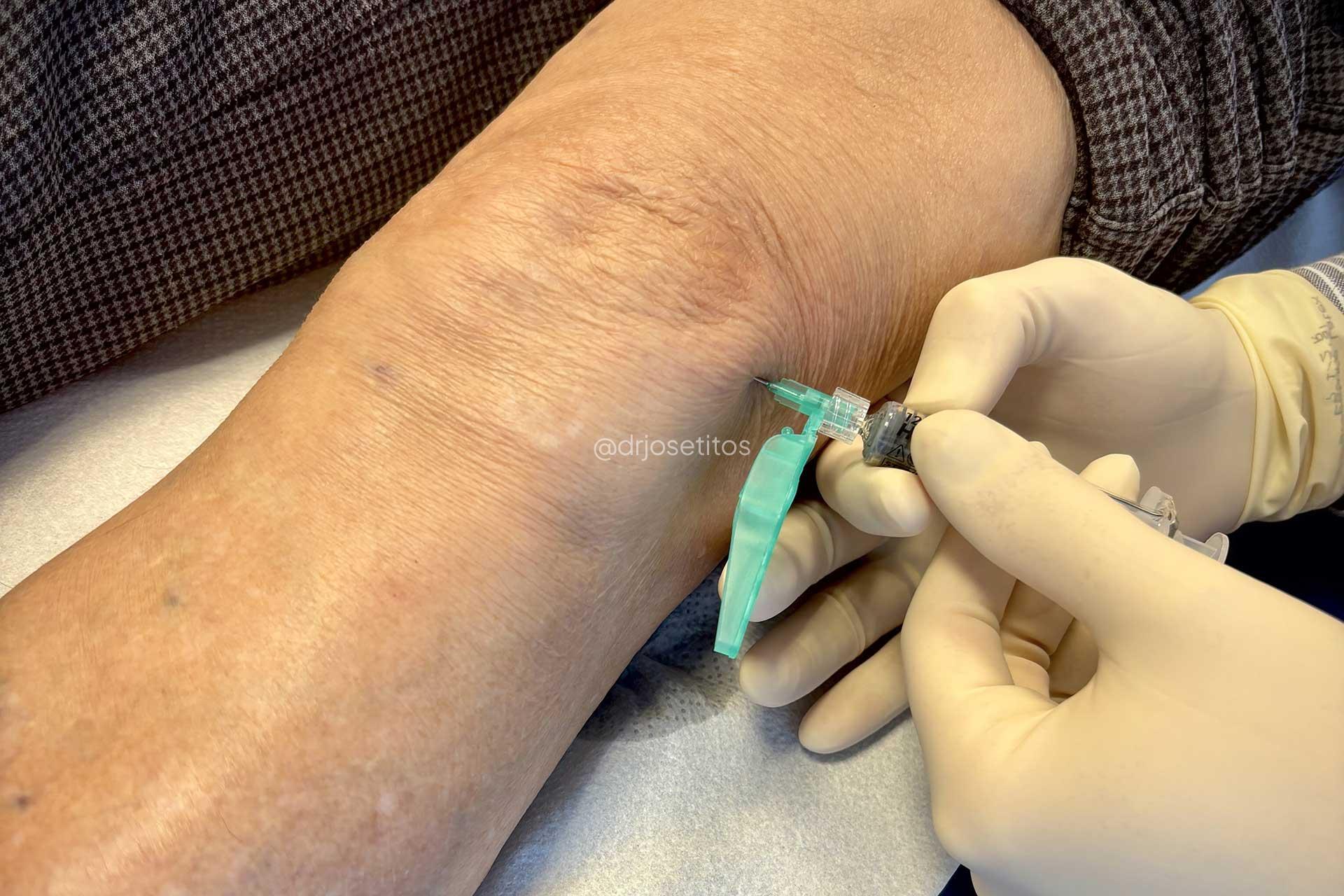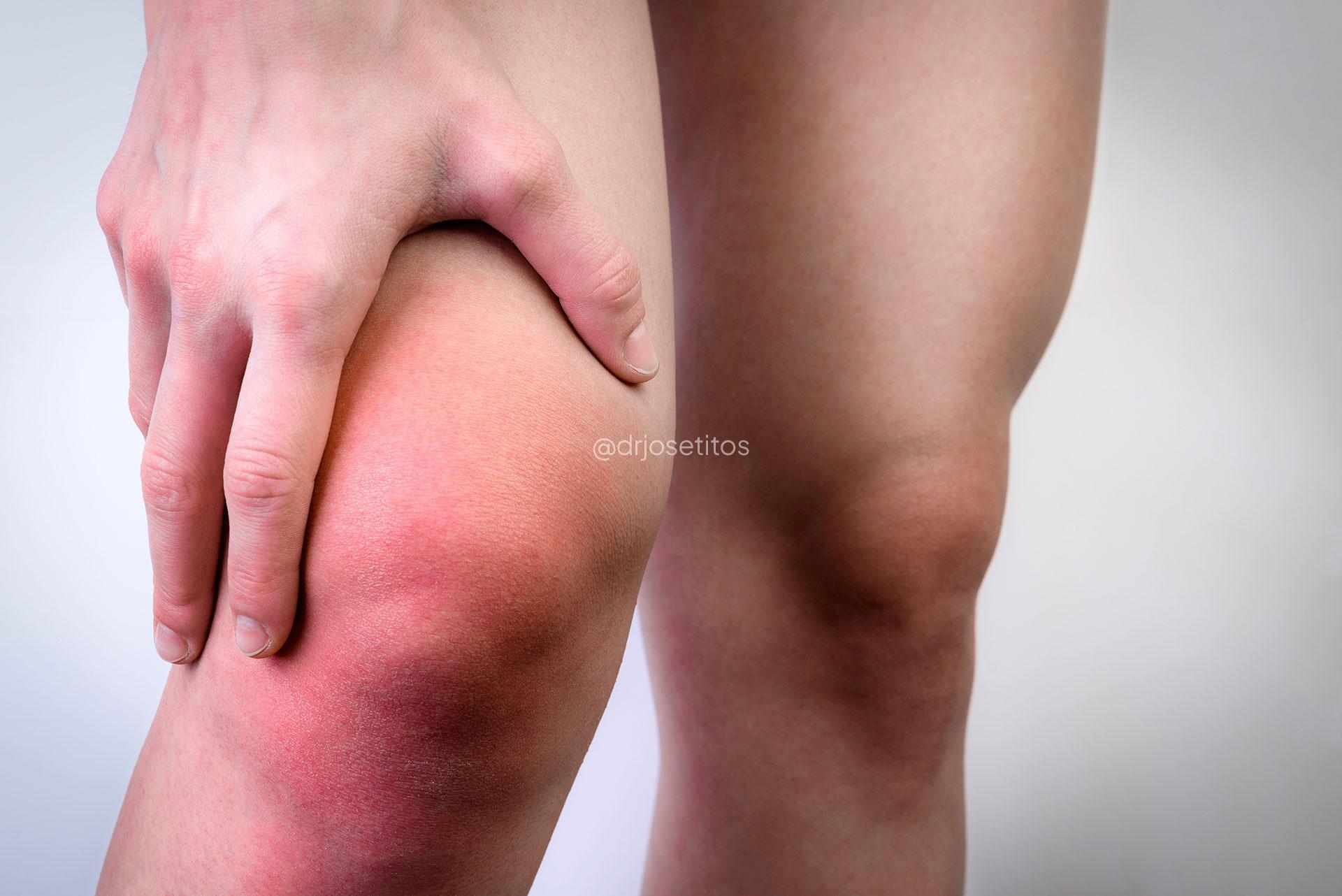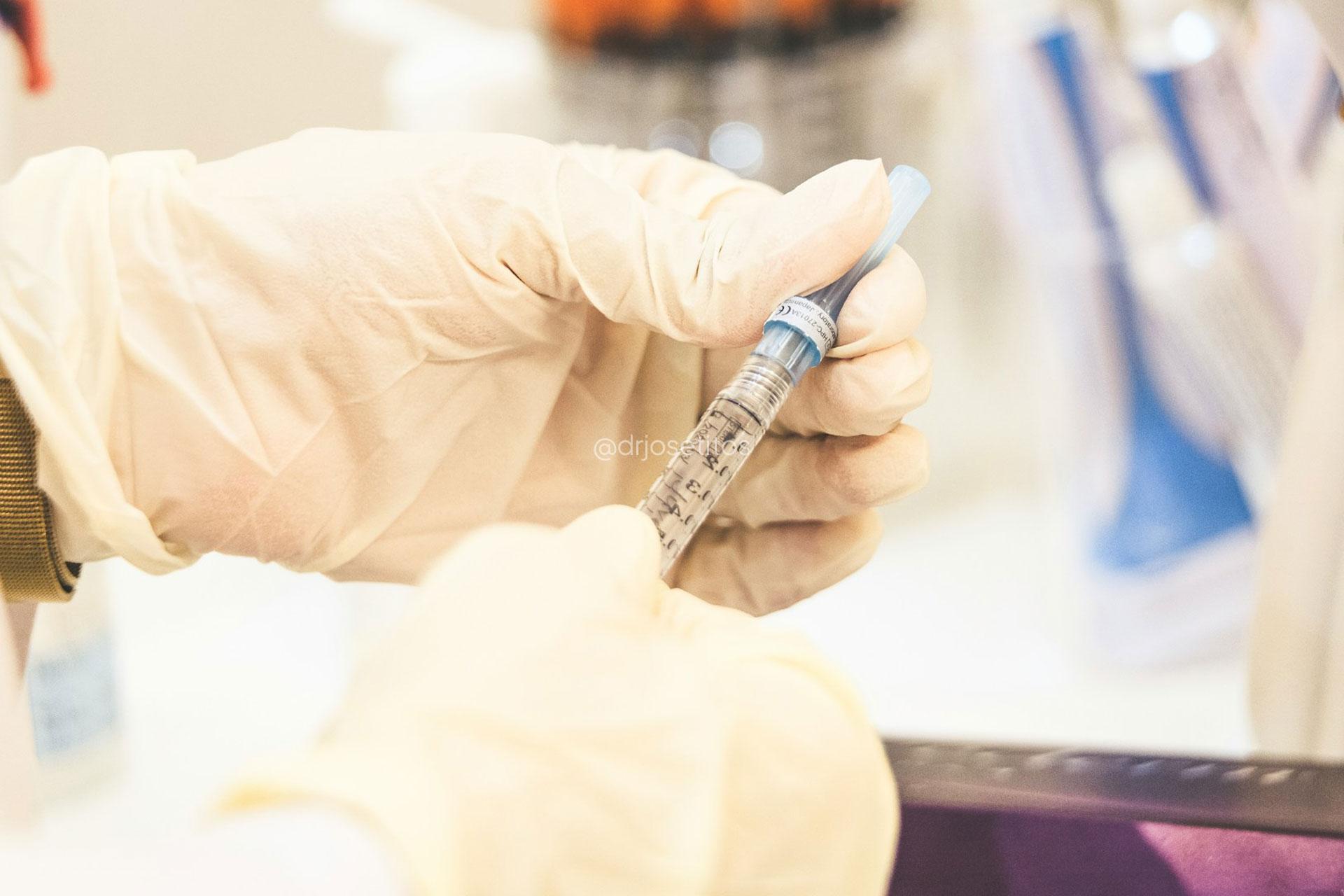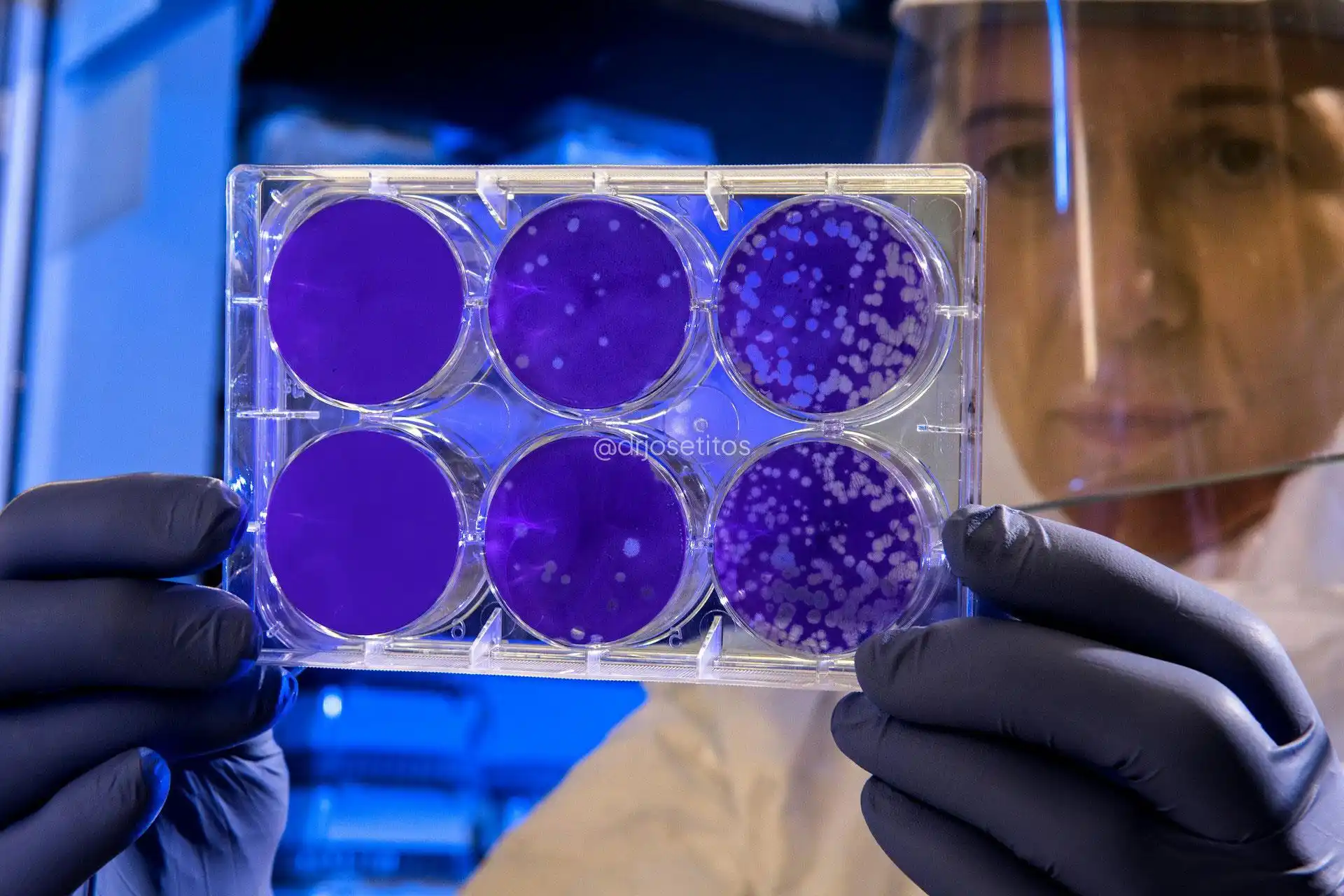TREATMENTS
Intra-articular infiltrations
Techniques, types and benefits for pain relief and joint regeneration.
KNEE INFILTRATIONS IN FIGURES
%
They reduce pain after PRP infiltration.
%
experience improved joint mobility.
weeks to evaluate results.
year of pain relief according to severity of injury.
Infiltrations
Knee infiltrations are a promising treatment for relieving pain relief and improve function, especially in cases of osteoarthritis and cartilage lesions.
DESCRIPTION
What are intra-articular infiltrations?
Intra-articular infiltrations are novel treatments within the biological therapies applied to the knee. These techniques are aimed at relieving pain, improving functionality and, in some cases, promoting the regeneration of damaged cartilage.
TYPES OF INFILTRATION
How infiltrations are injected
Infiltrations are administered by puncturing the knee joint, usually in the superolateral region of the patellofemoral joint, to ensure adequate and effective access to the joint cavity. If this is not possible, anterolateral access of the femorotibial interlining is used.
Knee infiltration procedure
Position of the patient
The patient is placed in the supine position (lying on the back), with the leg relaxed and extended.
Site selection
The most frequent puncture site is the superolateral superolateral region of the knee that is to say, in the external and superior part of the joint, where the articular cavity of the knee is located.
3. Asepsis
Before performing the puncture, a strict aseptic procedure is carried out. asepsis the area with the use of an antiseptic, such as povidone povidone iodine o chlorhexidineas well as sterile gloves to reduce the risk of infection.
4. Puncture
Using a fine, sterile needle, it is introduced into the knee joint space. The puncture can be guided by direct palpation or, in some cases, with ultrasound to ensure the accuracy of the infiltration.
5. Injection
Once the needle is correctly positioned in the joint cavity, the medication or therapeutic substance is injected into the knee.
6. Completion
After infiltration, the needle is removed, the dressing is placed and the knee is slightly moved so that the substance reaches the entire joint cavity.
7. Care
In the next hours, relative rest is advised, apply local ice and if the pain persists, it is advisable to take an oral analgesic.

Types of knee infiltrations

Corticosteroids
The corticosteroids are powerful anti-inflammatory drugs used to reduce inflammation and pain in the joints. They are injected directly into the knee to quickly relieve symptoms.
Advantages
- Rapid relief of pain and inflammation.
Disadvantages
- The effects are temporary (usually lasting weeks to months).
- Repeated use may cause long-term cartilage damage.
Results
- Improvement of pain: About 70-80% of patients experience short-term pain relief.
- Functionality: Can improve mobility by 60-70% but only temporarily.
Hyaluronic Acid
The hyaluronic acid is a substance found in the synovial fluid of the joints. It is used to lubricate the joint, improve mobility and reduce friction in the knee, which helps relieve pain and stiffness. This treatment is useful in cases of mild to moderate osteoarthritis and may delay the need for surgery.
Advantages
- Provides long-term relief (usually 6 months to 1 year).
- Improves synovial fluid viscosity and helps protect cartilage.
Disadvantages
- It may not be as effective in severe cartilage lesions.
- It requires several sessions to obtain optimal results.
Results
- Improvement of pain: Between 60-70% of patients report improvement in pain reduction.
- Functionality: Improves mobility by 50-60% in many patients in the long term.


Platelet Rich Plasma (PRP)
The platelet-rich plasma (PRP) is a biological treatment that uses the patient’s own platelets. These are extracted through a blood draw and processed to concentrate the platelets, which contain growth factors that aid in the regeneration of damaged tissues.
Advantages
- It is an autologous treatment, that is, it uses the patient’s own cells, which reduces the risk of rejection.
- Helps cartilage regeneration and repair of damaged tissues.
- Stimulates tissue healing and improves knee function.
Disadvantages
- It may not be as effective in severe cartilage lesions.
- It requires several sessions to obtain optimal results.
Results
- Improvement of pain: Approximately 70-80% of patients experience significant pain relief.
- Functionality: Improves function by about 60-70% of patients in the long term.

Stem Cells
Stem cell treatment stem cell uses autologous stem cells, usually extracted from the patient’s bone marrow or fat tissue, which are injected into the knee to stimulate regeneration of damaged cartilage and promote tissue healing. Stem cells have the ability to differentiate into different types of tissues, including cartilage.
Advantages
- Potential to regenerate damaged cartilage and improve joint structure.
- It does not cause allergic reactions since they are the patient’s own cells.
- Helps relieve pain and improves long-term function.
Disadvantages
- Costly and relatively new treatment, with results that are still under investigation.
- Several sessions may be necessary.
- There may be a risk of infection or complications during the procedure.
Results
- Improvement of pain: Between 70 y 80% of patients experience a marked improvement in pain reduction.
- Functionality: Improves mobility by 60-75% of patients in the long term.

Appropriate treatment will depend on the patient’s condition and the severity of the injury.
Each type of infiltration has advantages and disadvantages, as well as different costs and long-term results. However, biologic treatments, such as platelet-rich plasma and stem cells, are offering innovative alternatives with great potential for joint regeneration.
Video rights Dr. Cory Calendine MD
Contact Form
Send your inquiry through our contact form.
Fill out the form below to book an appointment, make an inquiry or request more information.
I will get back to you quickly.
All fields marked with an asterisk are required fields.
